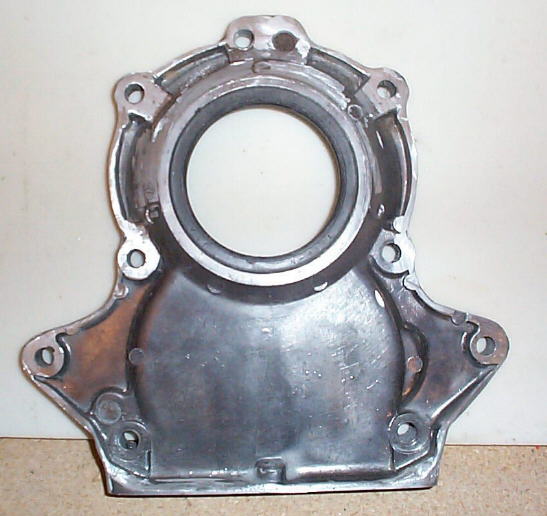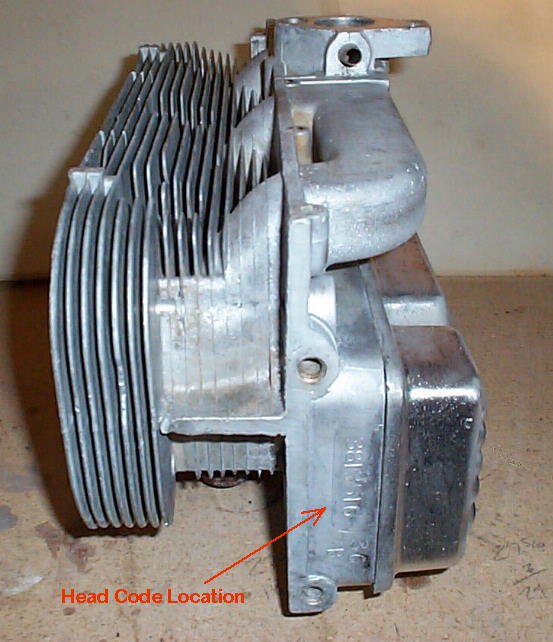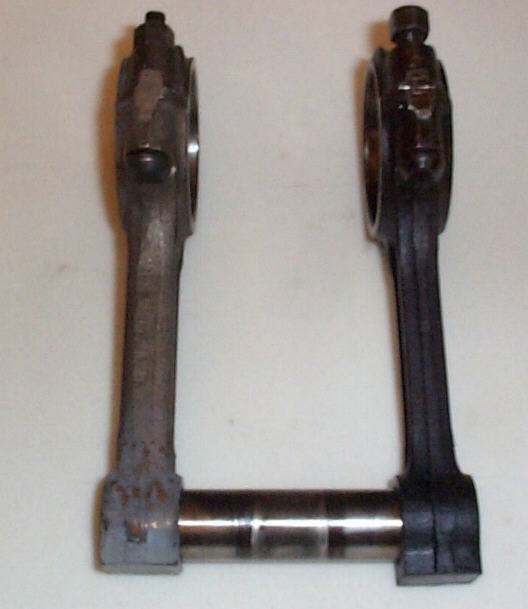|

Case half of my '63 102hp engine, after cleaning, but
before painting. |

|
Inside the same case half. |

End Cover per William
Wynne's manual |

Head from my '65 110hp engine. |
| 
Combustion chamber of my '65 110hp engine, after cleaning, but
before porting. |

The rocker arm side of the same head. |

Here's the head identification number. |

....and here's another view. |

Crank with safety shaft installed. |

This is the crank identification number. 8409 is the one
you want.
It was used in all the late 2700cc engines. |

Here's the case identification number. |

Here's a closer look at the case code. It's the t letter
suffix that tells you if it's early or late. The HP related to the suffix is
basically unimportant, as the head is what dictates the HP. The same early
case can be used with low compression smog heads, 110 heads, 140 heads and
even the 180 turbo heads. It's the combination of the case code and the head code
which truly identifies the engine. |

Early cases have a smaller displacement than the later later
cases. This was achieved through stroke. On the left is a late connecting rod
from a 1965 110hp engine. On the right is the rod from a 1963 102hp engine. |

Another view of the con-rods. |